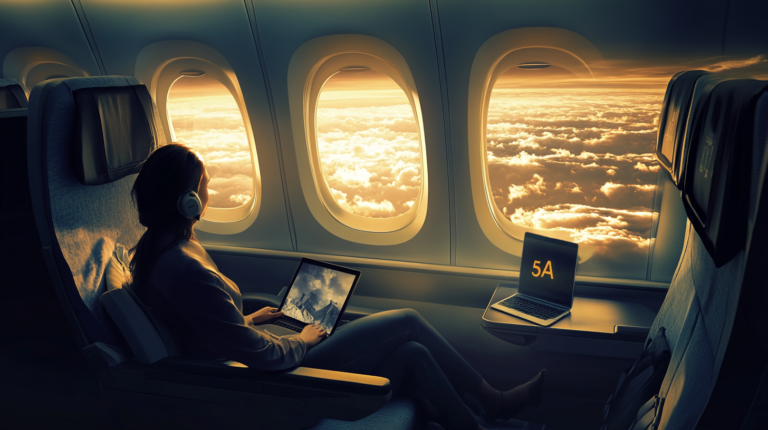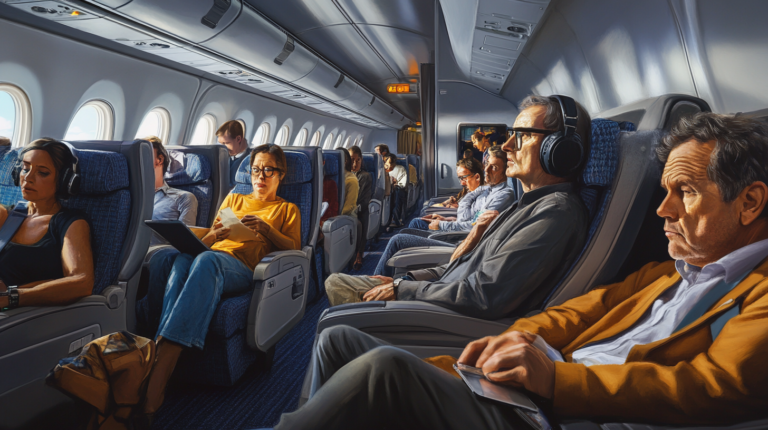Airport Culture and the 2025 Travel Trends: Embracing the Future of Air Travel

The world of air travel is on the cusp of a revolutionary transformation. As we approach 2025, airports and airlines are redefining the passenger experience, integrating cutting-edge technology, innovative design, and personalized services. This evolution is not just about getting from point A to point B; it’s about enhancing every aspect of the journey. As travelers return to the skies with renewed enthusiasm, the industry is capitalizing on this momentum to create experiences that are seamless, engaging, and memorable. In this comprehensive exploration, we’ll delve into the latest trends shaping airport culture and how these innovations are adapting to the post-recovery travel patterns.
The Evolution of Airport Design: Creating Personalized Experiences
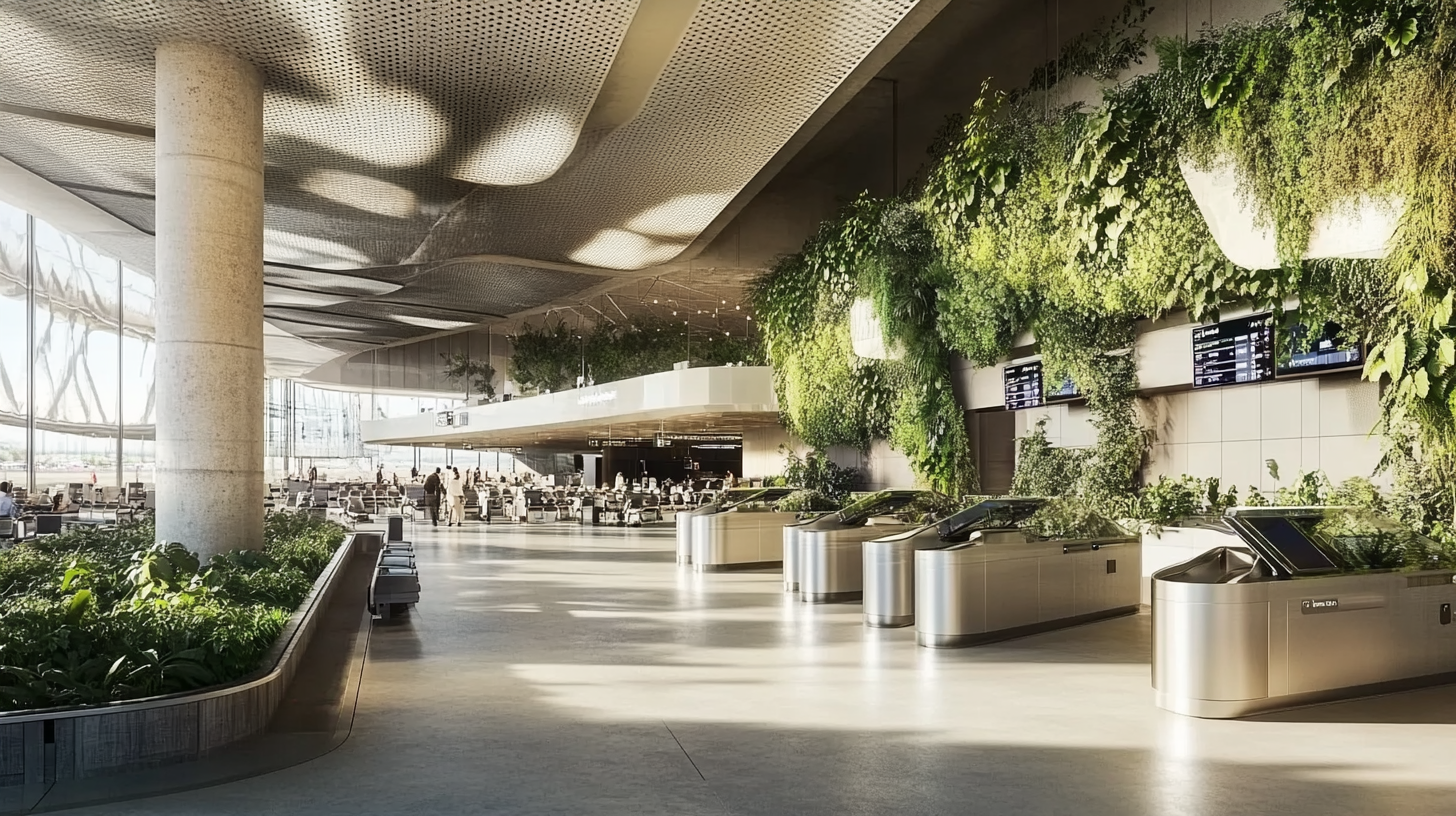
Airports are no longer mere transit points; they’re becoming destinations in their own right. In 2025, the emphasis is on creating environments that reduce stress and cater to the diverse needs of travelers. According to insights from Agati, emerging trends in airport design focus on enhancing the traveler experience through personalized, stress-reducing environments. Passengers can now enjoy amenities ranging from quiet meditation rooms to interactive art installations that reflect the local culture.
Biophilic Design and Micro-Environments
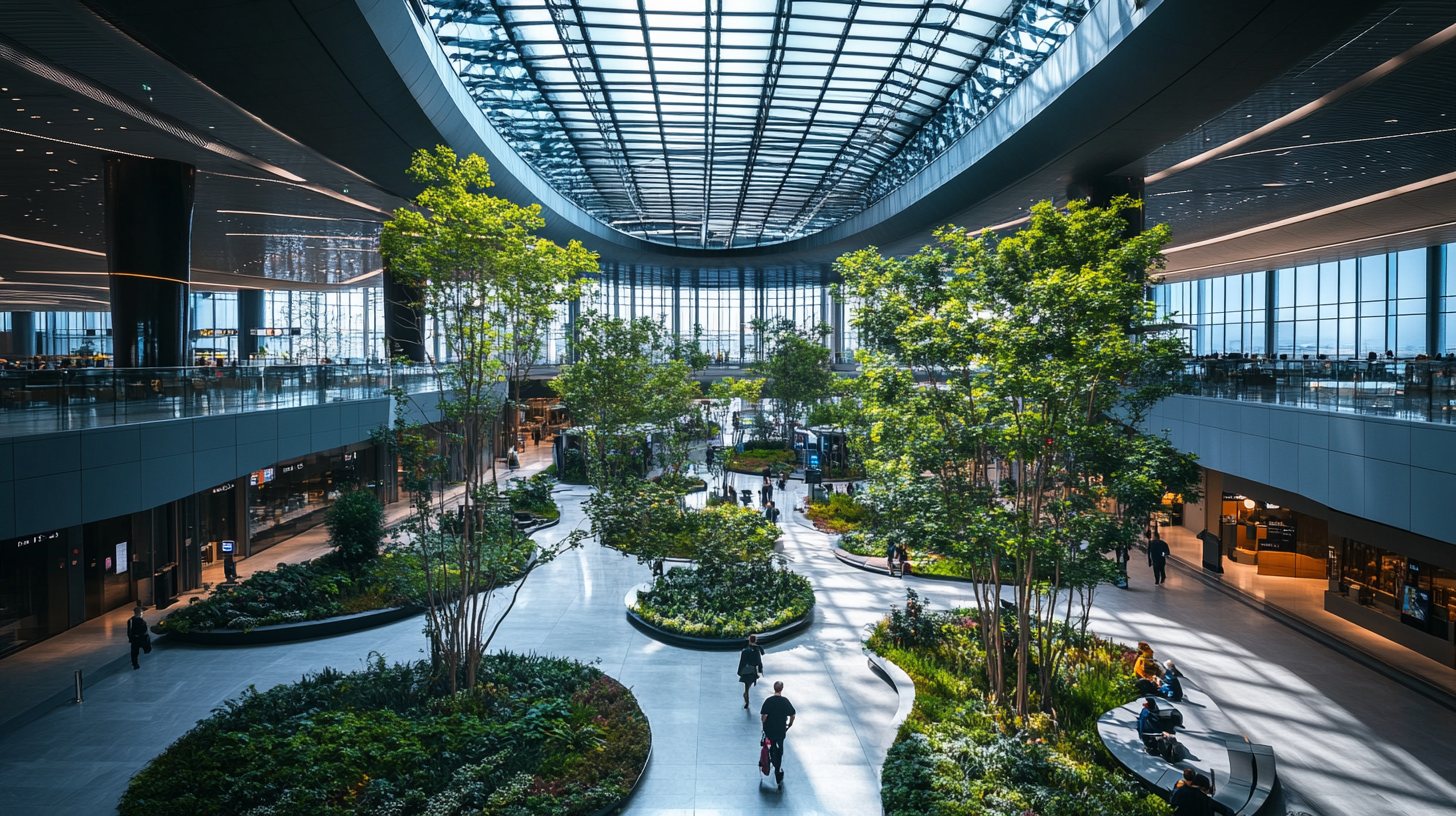
The integration of biophilic design—incorporating natural elements into architecture—is gaining traction. This approach not only enhances aesthetic appeal but also promotes well-being among passengers. Airports are introducing micro-environments that provide varied seating arrangements and quiet zones, catering to travelers seeking relaxation or workspace. Even smaller regional airports are embracing this trend, integrating local flora and artwork to create a sense of place and offering individualized experiences that rival major hubs. These developments align with the concepts discussed in Biophilic Architecture in Modern Airports , where the focus is on harmonizing built environments with nature to enhance passenger well-being.
Technological Innovations: Enhancing Efficiency and Personalization
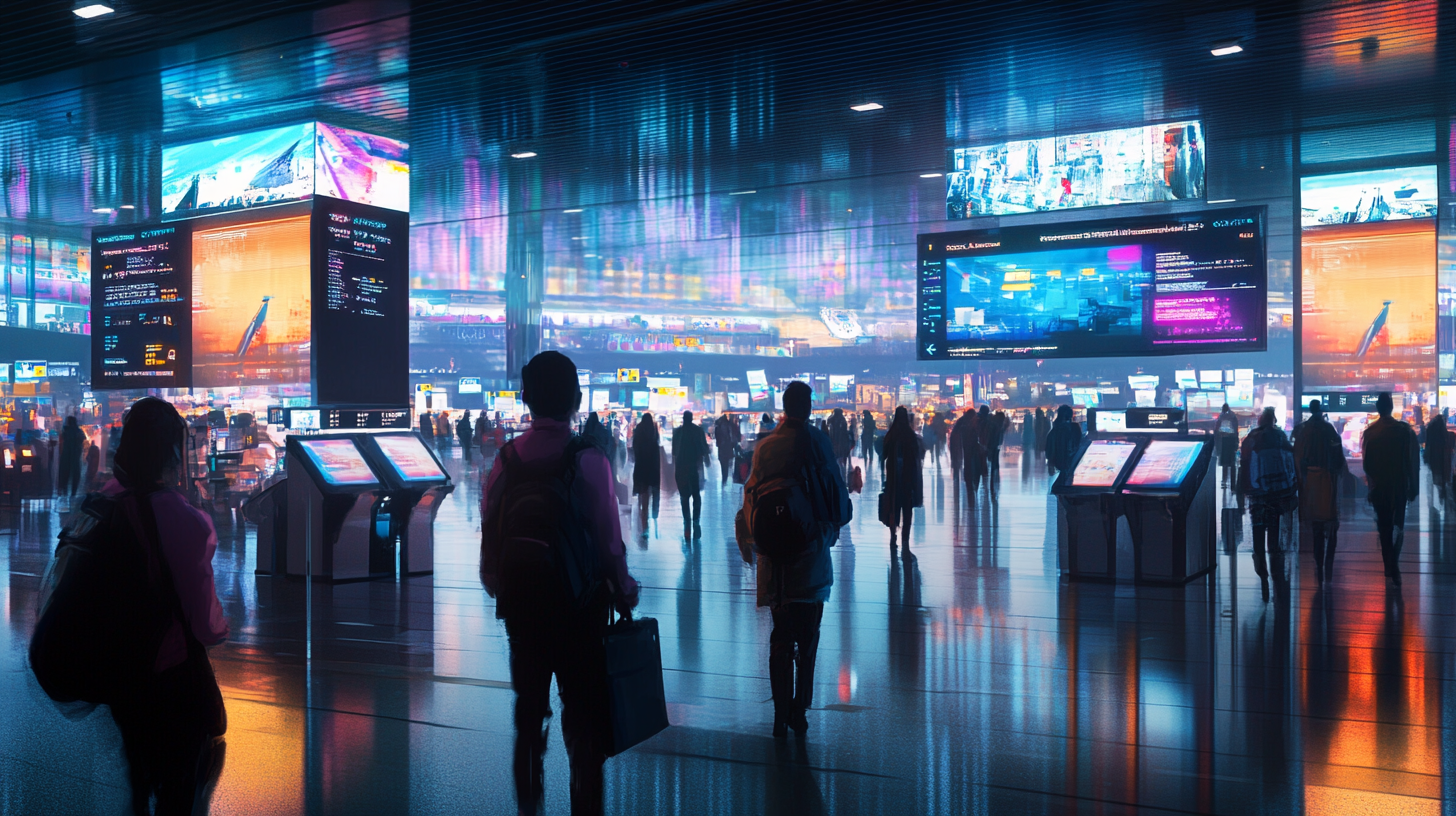
Technology is at the forefront of transforming air travel. Innovations are streamlining processes, enhancing security, and personalizing the journey like never before. For passengers, this means shorter wait times, greater control over their travel experience, and a more seamless journey from check-in to boarding.
Biometric Check-Ins and AI Integration
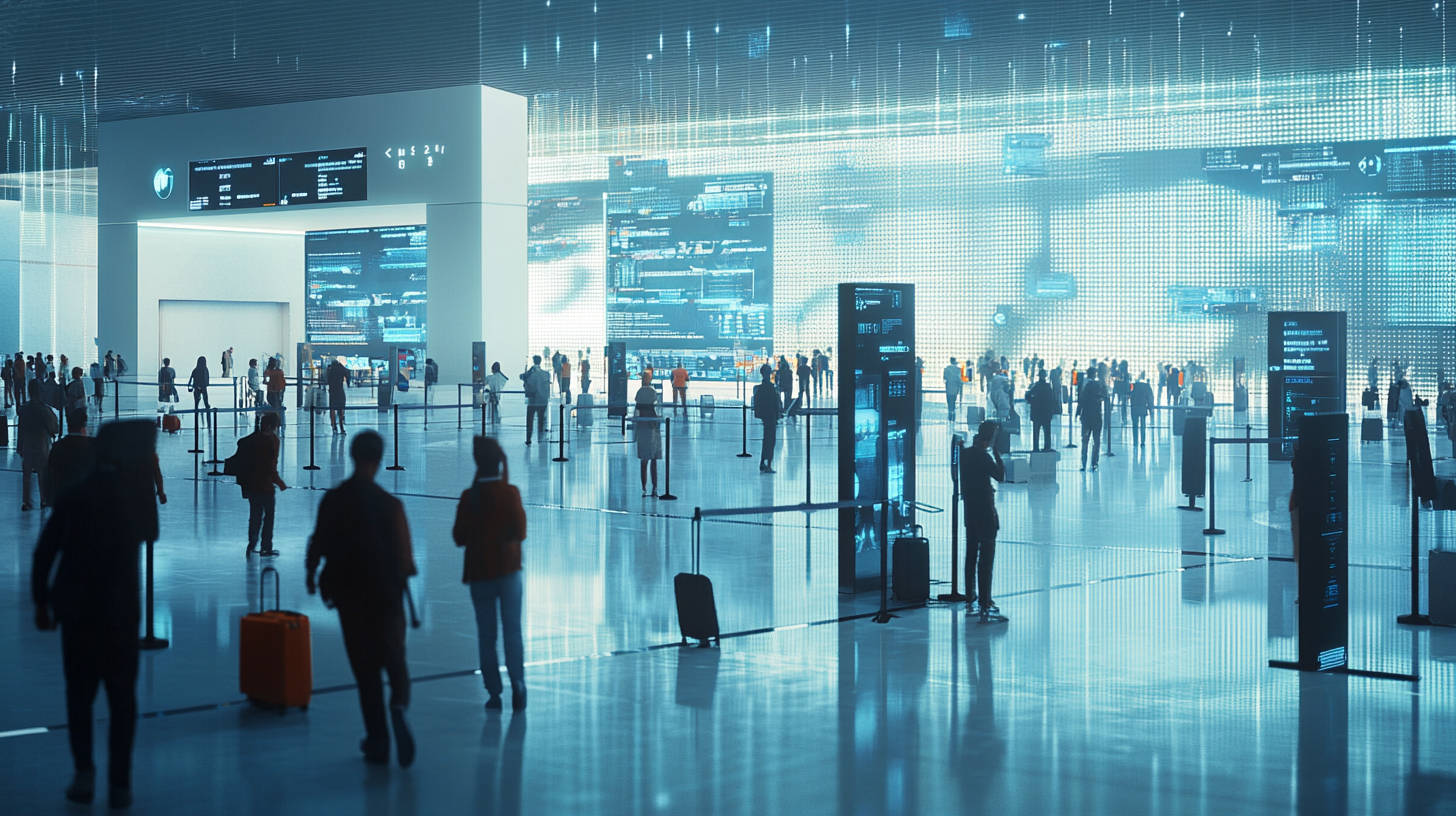
The adoption of biometric technologies is revolutionizing the check-in and security processes. Facial recognition and AI-powered systems enable seamless, contactless experiences, reducing wait times and enhancing security measures. For example, facial recognition gates allow passengers to move through security checkpoints without presenting boarding passes or identification. Airports are utilizing AI and automation to personalize services, with AI-driven personalization creating immersive journeys tailored to individual preferences. These advancements are part of a broader shift towards smart airports, as detailed in AI and Automation in Next-Generation Airports , where technology enhances every touchpoint of the passenger journey.
High-Speed Connectivity and In-Flight Experience
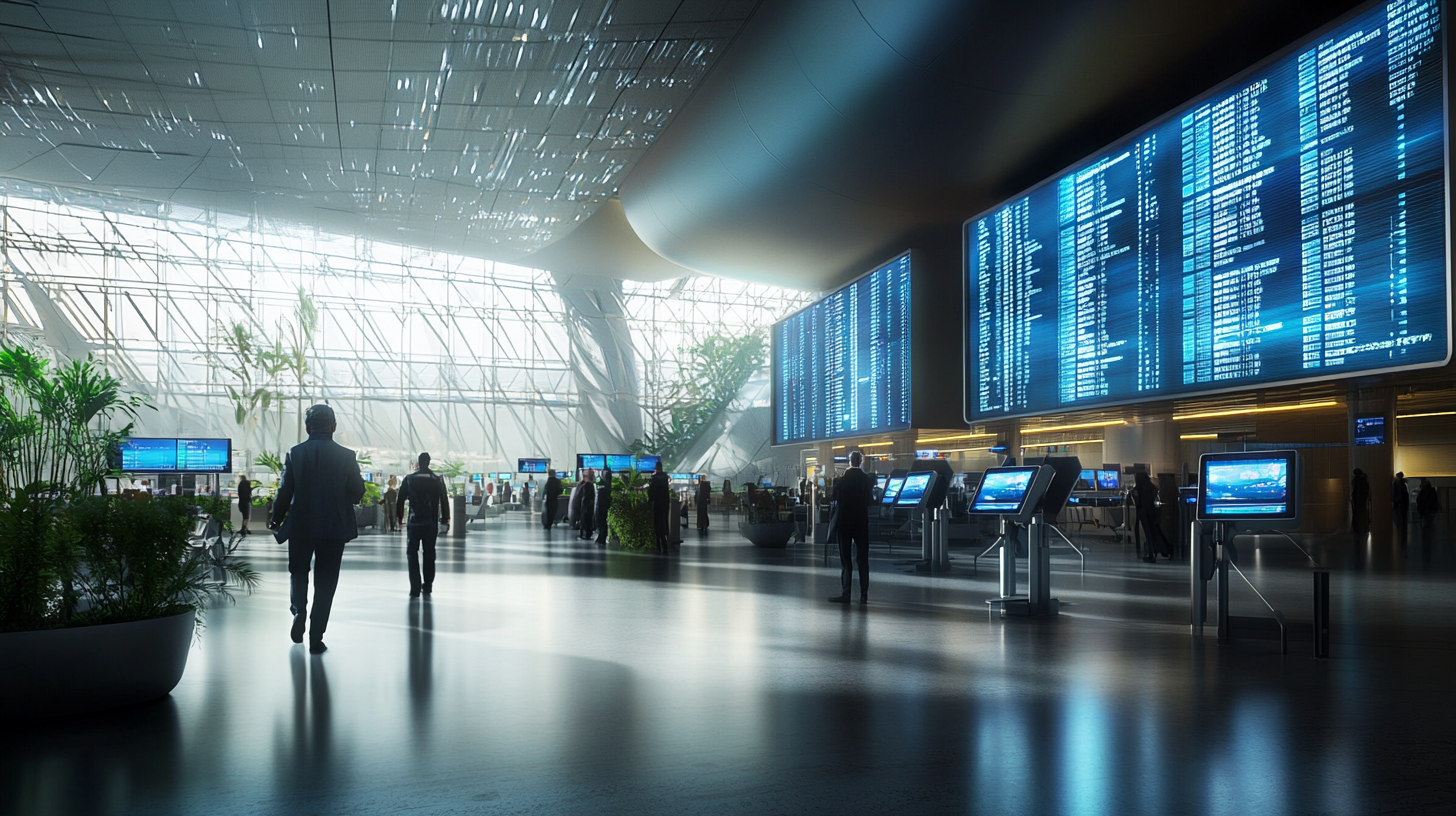
In-flight experiences are being redefined through reliable high-speed Wi-Fi and advanced entertainment options. Leading airlines like Delta and Turkish Airlines are providing connectivity that allows passengers to stay connected or enjoy personalized entertainment. Passengers can now stream their favorite shows, engage in live chats, or participate in virtual meetings while airborne. Virtual reality and emotion recognition technologies are being incorporated to offer content that adapts to passengers’ emotional states, turning routine flights into memorable, customized experiences. These innovations are further explored in Transforming In-Flight Entertainment Through Technology , highlighting how airlines are leveraging technology to exceed passenger expectations.
Enhanced Lounge Experiences: Redefining Airport Luxury
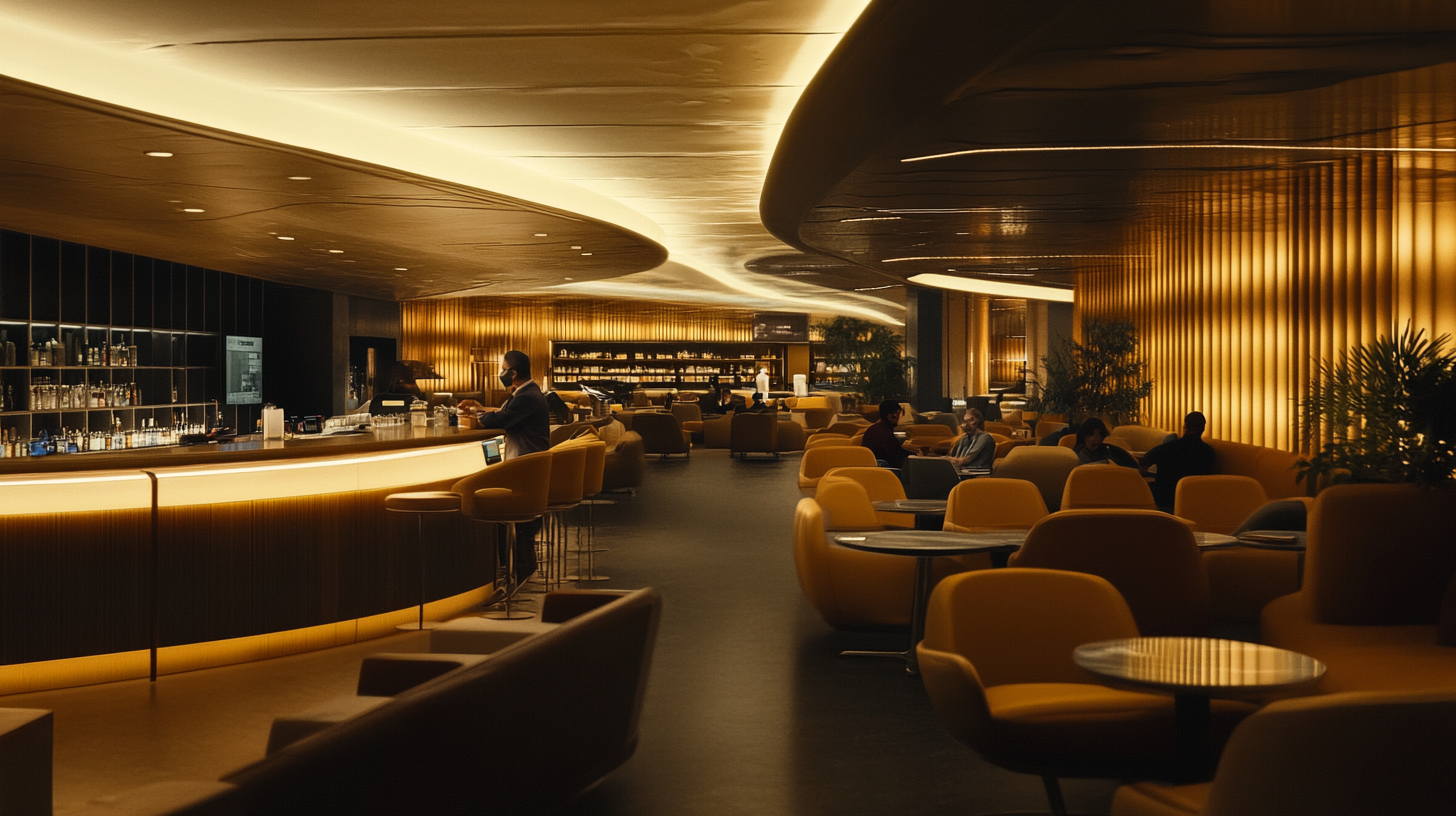
The concept of airport lounges is undergoing a transformation, offering passengers more than just a place to wait for their flights. For the discerning traveler, these lounges provide an oasis of tranquility amid the bustling airport environment.
Exclusive Lounges and Premium Services

Airlines like Delta and United are introducing exclusive lounges that provide a luxurious retreat within the airport. These spaces offer amenities such as spa services, gourmet dining, and private workspaces, catering to both business and leisure travelers. Passengers can indulge in wellness treatments, savor fine dining curated by renowned chefs, or unwind in quiet zones designed for relaxation before their journey. The introduction of closed-door business class suites by Air France and American Airlines highlights the trend towards increased privacy and comfort. This trend towards elevated lounge experiences is indicative of the industry’s commitment to passenger satisfaction, as discussed in The Evolution of Airport Lounge Luxury in 2025 .
Boutique Hotels and Unique Stays
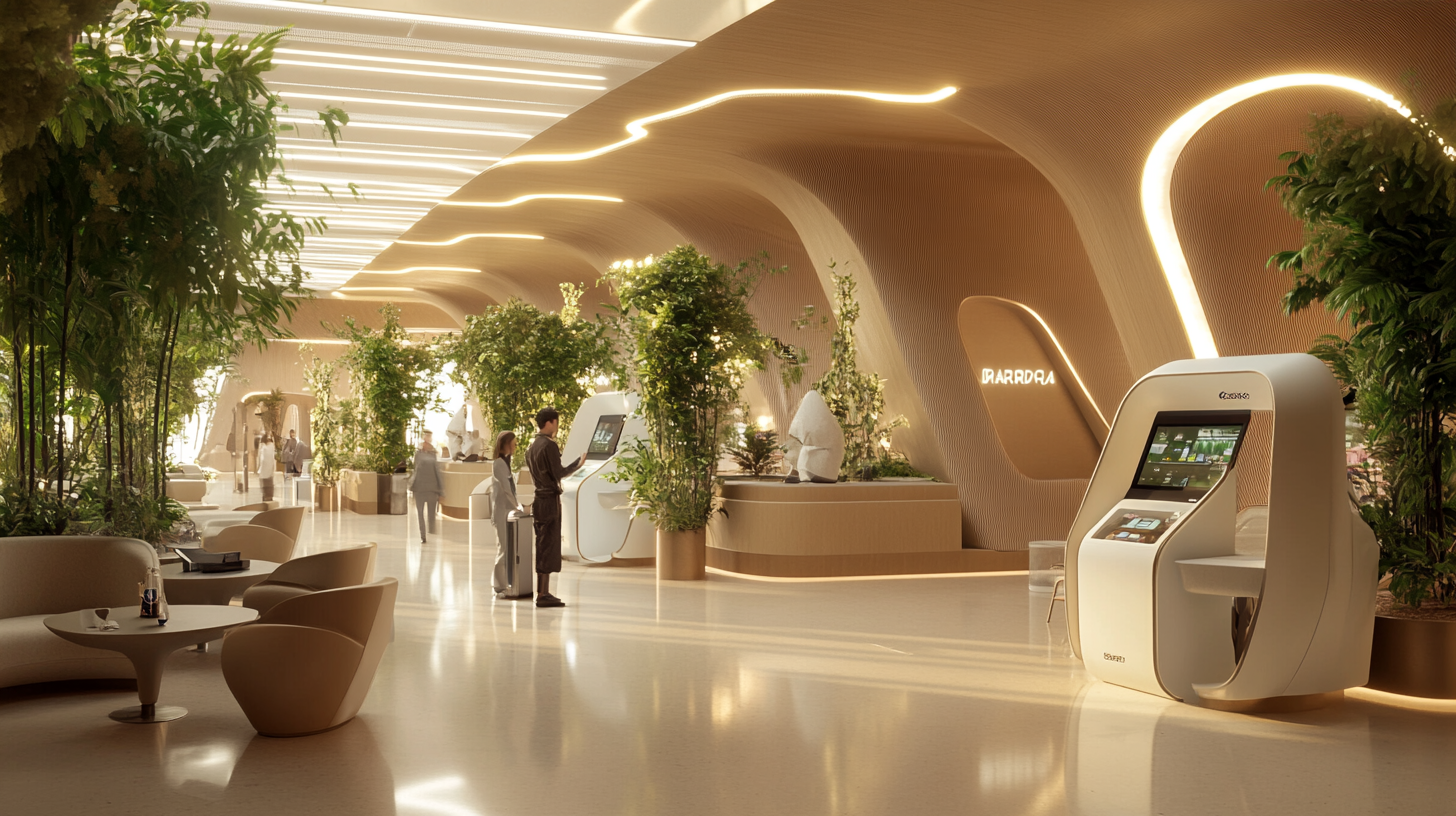
The rise of luxury boutique hotels connected to or within airports is enhancing the diversity of accommodation options for travelers. These establishments offer unique experiences that differ from traditional business hotels, appealing to travelers seeking distinct and memorable stays. These hotels often incorporate local themes into their design and services, providing guests with a taste of the destination’s culture from the moment they arrive. Amenities such as rooftop bars with panoramic runway views, immersive art installations, and personalized concierge services set them apart from conventional airport hotels. The integration of such accommodations aligns with the trend towards experiential travel, as explored in Innovations in Airport Hospitality Services .
Culinary Innovations: Airports as Dining Destinations
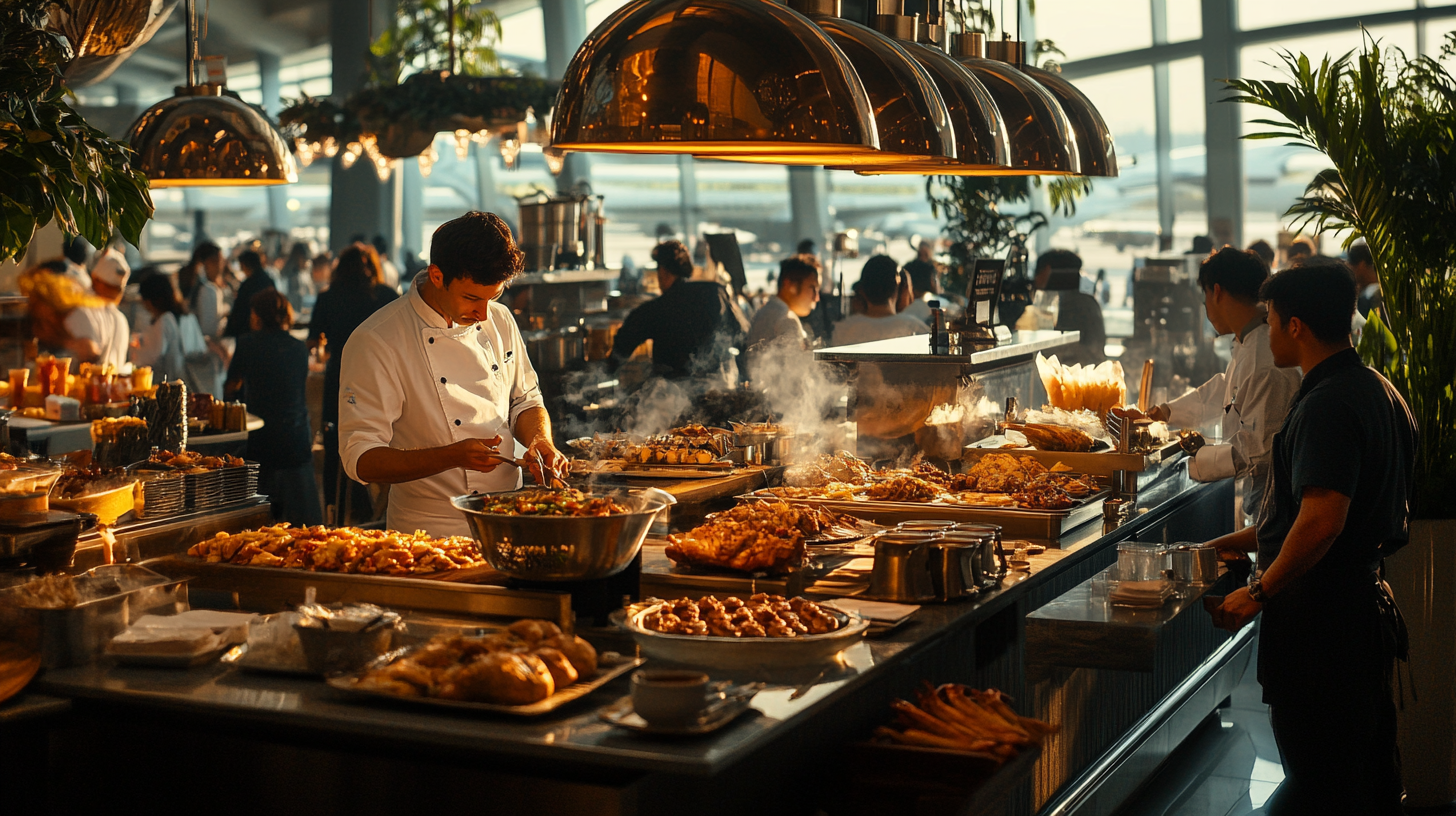
Airports are elevating their culinary offerings, transforming terminals into gastronomic destinations. Travelers can now embark on a culinary journey, sampling gourmet dishes that reflect global cuisines.
World-Class Dining Experiences
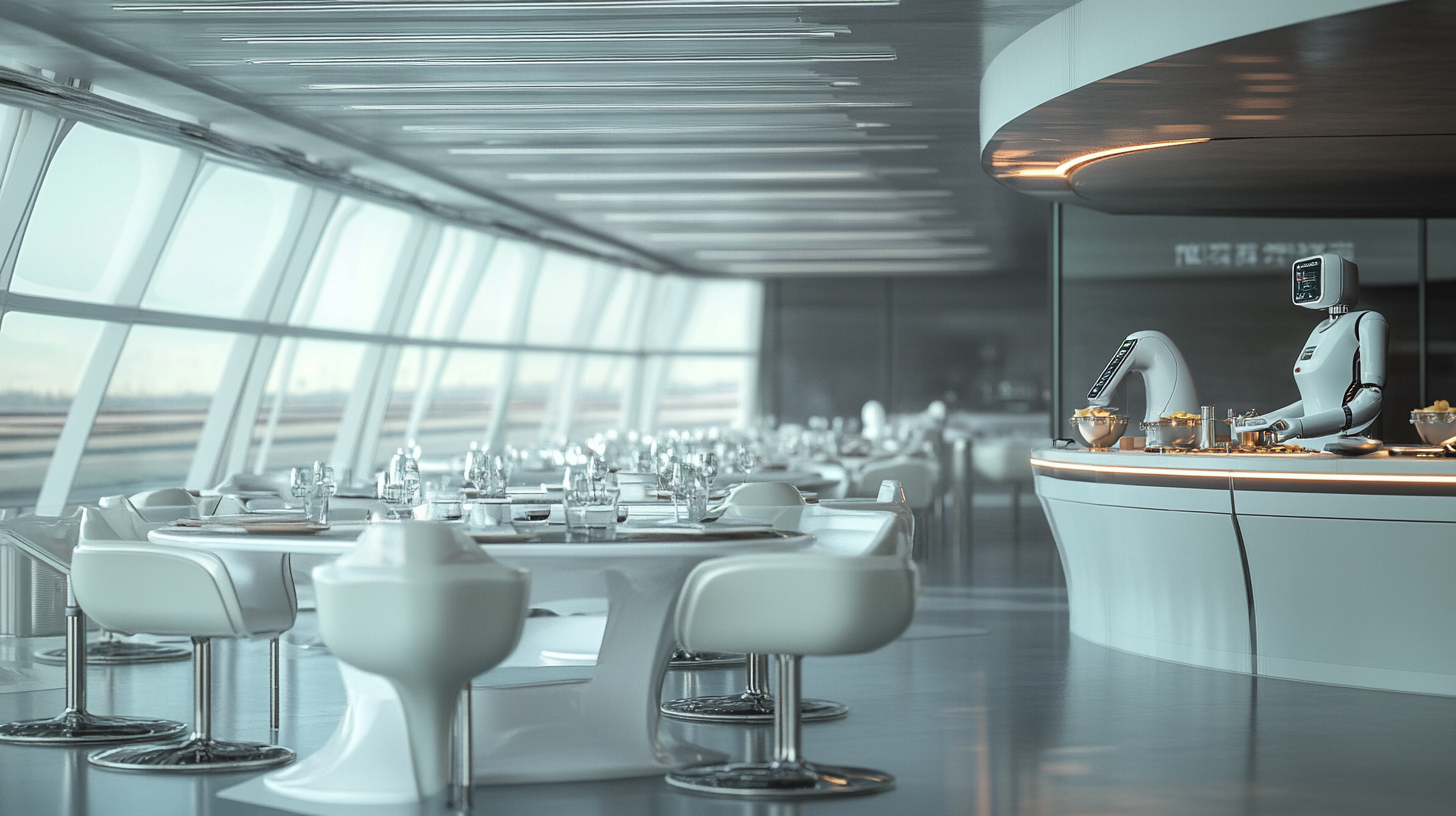
The integration of high-end dining establishments within airports is enhancing the travel experience. For instance, the Capital One Landing with chef José Andrés at Reagan National Airport provides travelers with exceptional culinary experiences without leaving the terminal. Such initiatives reflect a broader trend of airports partnering with renowned chefs and restaurateurs to offer diverse and quality dining options. From sushi bars serving freshly prepared delicacies to farm-to-table restaurants prioritizing local, seasonal ingredients, the airport dining scene is becoming a highlight of the travel experience. This evolution in airport dining is further examined in Gourmet Dining Trends in Modern Airports , illustrating how food and beverage offerings are being reimagined.
Catering to Diverse Tastes
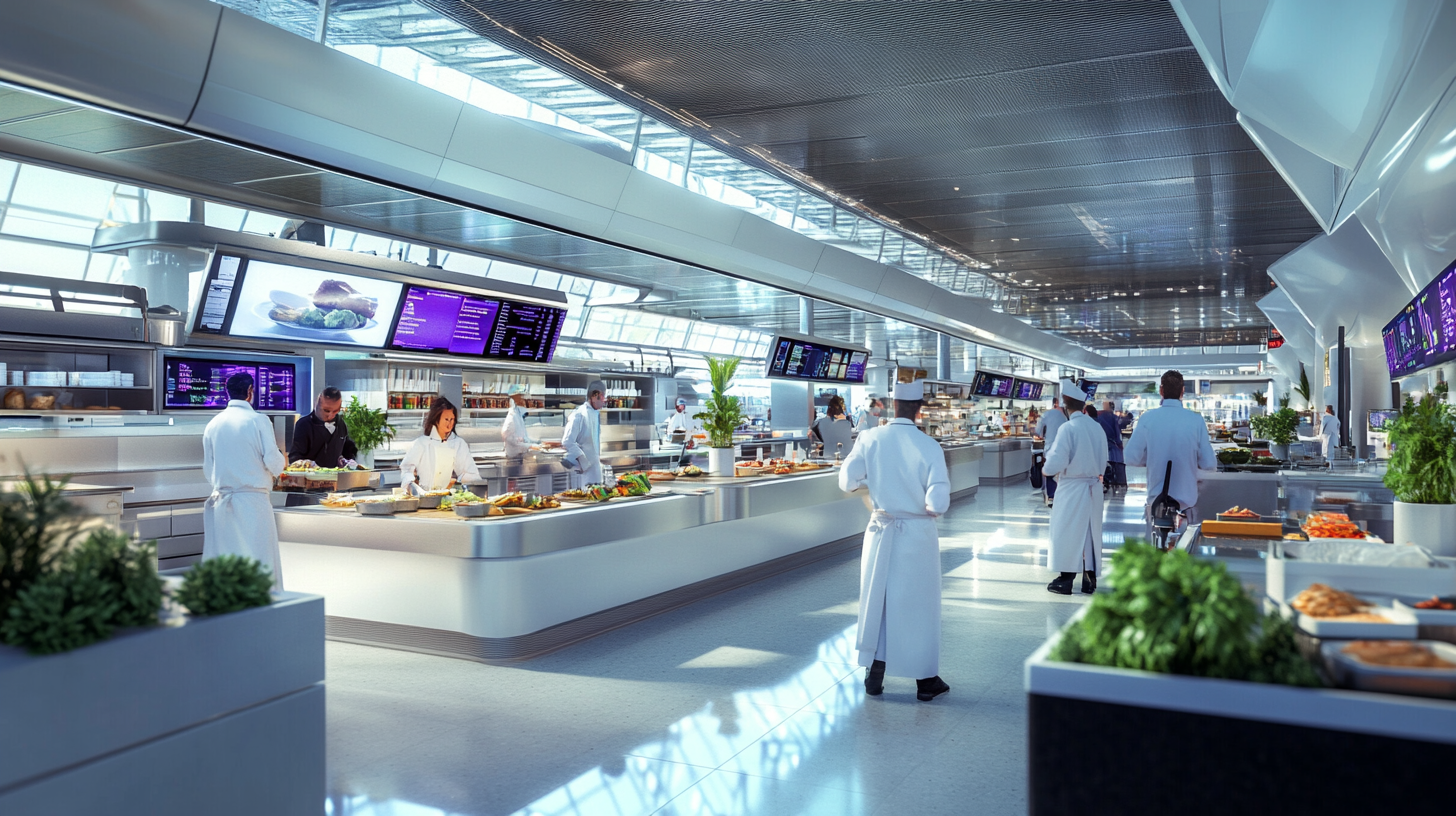
From local delicacies to international cuisines, airports are expanding their food and beverage options to cater to a global traveler base. Vegan, vegetarian, and gluten-free options are becoming more widely available, ensuring that travelers with dietary restrictions have ample choices. Some airports are even hosting food festivals and pop-up restaurants, bringing a dynamic and ever-changing culinary landscape to passengers. This not only enhances passenger satisfaction but also reflects the cultural diversity of destinations. The importance of catering to diverse tastes is highlighted in Diversity and Inclusion in Airport Culinary Services , emphasizing the need for inclusivity in food offerings.
Sustainability and Eco-Friendly Practices: Towards Greener Travel
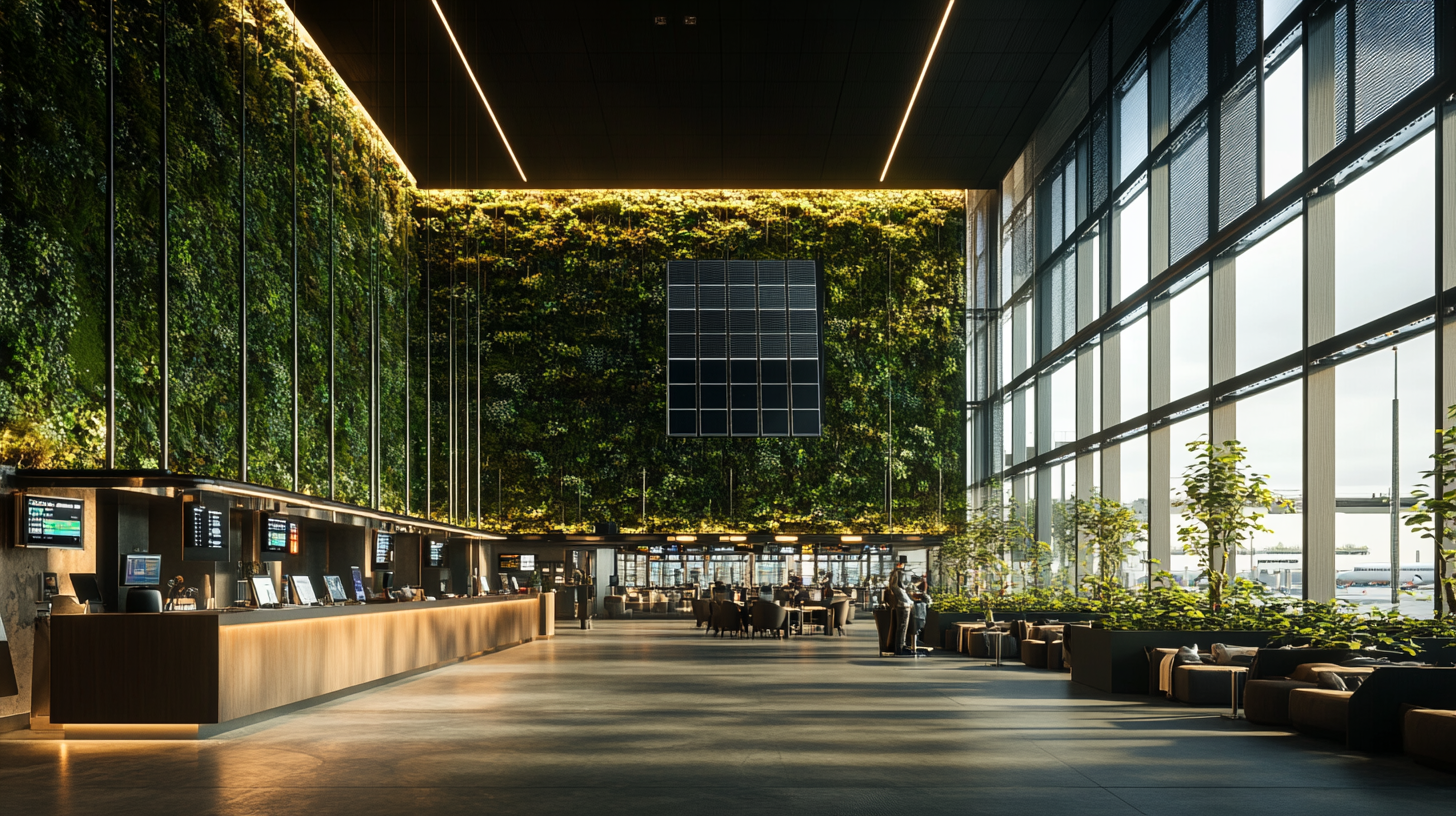
Sustainability is a pressing concern in the travel industry, and airports are responding by implementing eco-friendly practices and designs.
Green Initiatives in Airport Operations
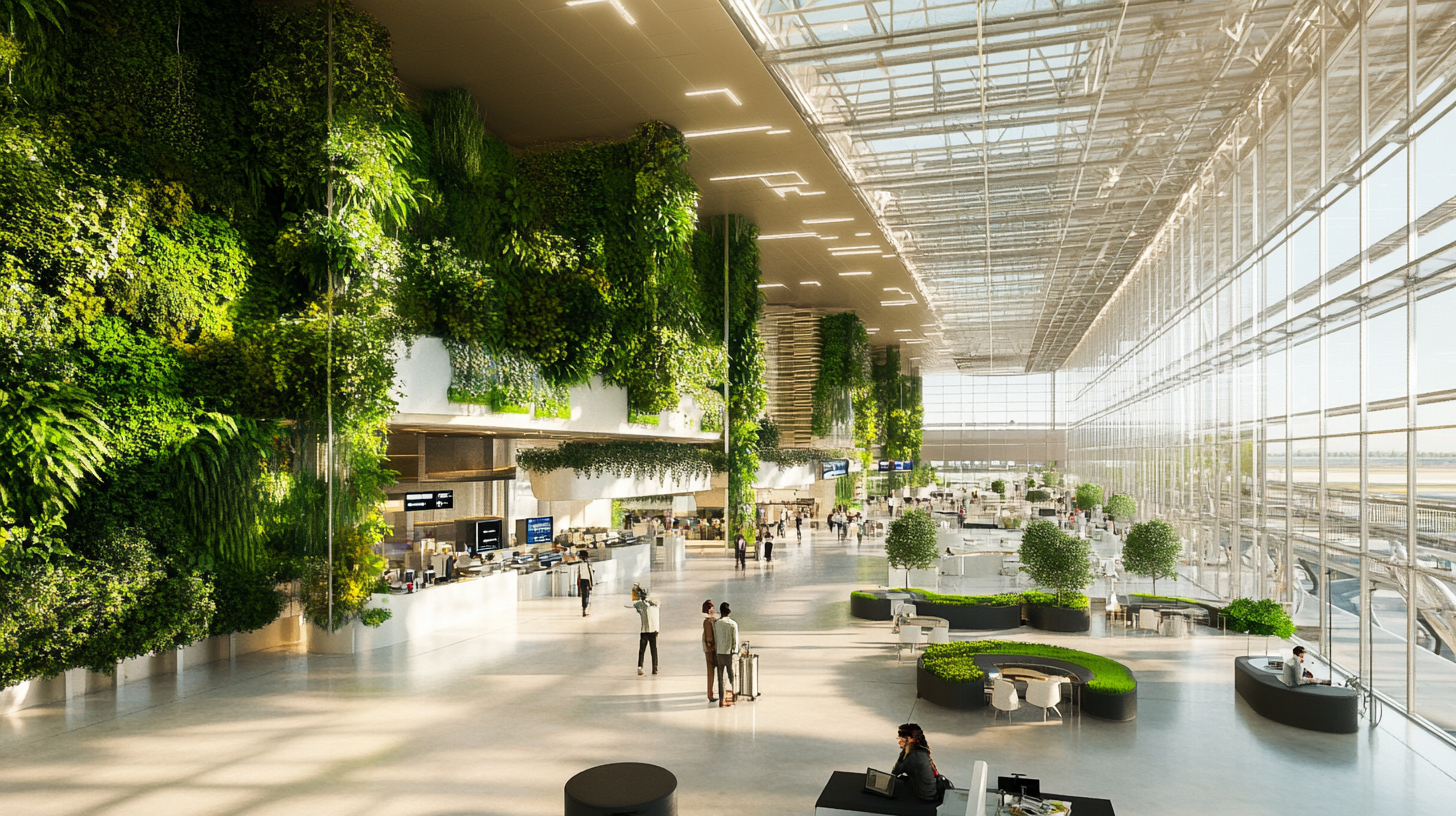
Airports are adopting sustainable measures such as optimized energy use, waste reduction, and the incorporation of green spaces. The use of Sustainable Aviation Fuels (SAFs) is gaining traction, with airlines and manufacturers aiming for net-zero emissions. Ground support equipment is evolving to be more eco-friendly, integrating IoT and AI-driven tools to enhance operational efficiency while reducing environmental impact. Recycling programs, water conservation efforts, and the use of renewable energy sources like solar and wind power are becoming standard practices. These efforts are part of the broader commitment to environmental stewardship, as detailed in Achieving Sustainability in Airport Operations , showcasing the industry’s dedication to combating climate change.
Sustainable Design and Architecture
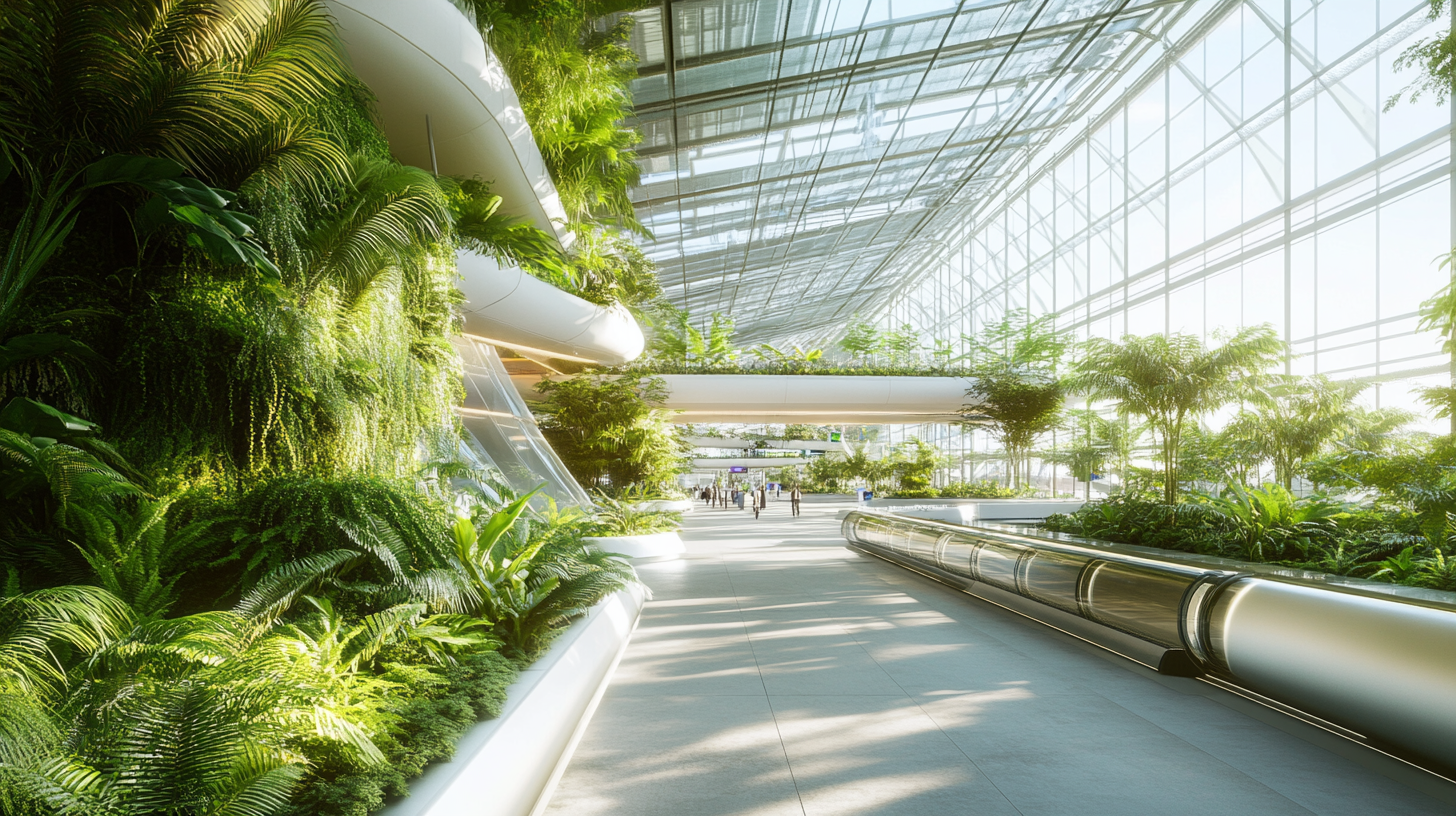
The implementation of sustainable architecture, including natural lighting, energy-efficient systems, and the use of renewable materials, is becoming standard in new airport designs and renovations. Architectural innovations such as green roofs, living walls, and rainwater harvesting systems are being integrated into airport designs. These features not only reduce environmental impact but also enhance the aesthetic appeal of terminals, creating a connection between travelers and the natural world. These efforts not only minimize environmental footprints but also create healthier environments for passengers and staff. Examples of these sustainable practices can be found in Green Architecture in 21st Century Airports , illustrating how design is key to eco-friendly operations.
The Impact of Personalization and AI on Travel
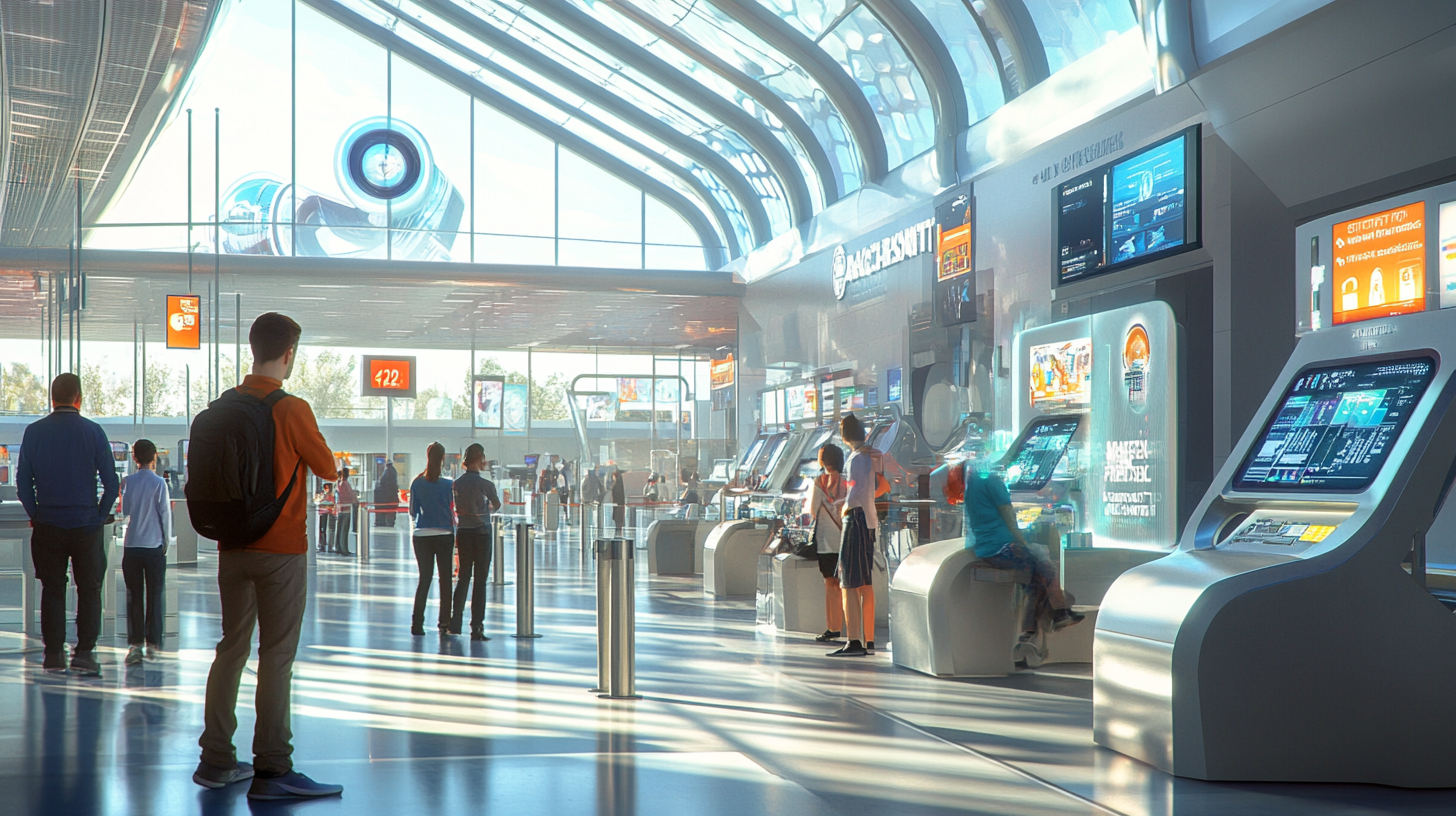
Personalization is reshaping how travelers plan and experience their journeys, with AI playing a pivotal role. Travel apps and platforms are leveraging machine learning algorithms to analyze user behavior and preferences, providing personalized recommendations.
AI-Powered Trip Planning and Services
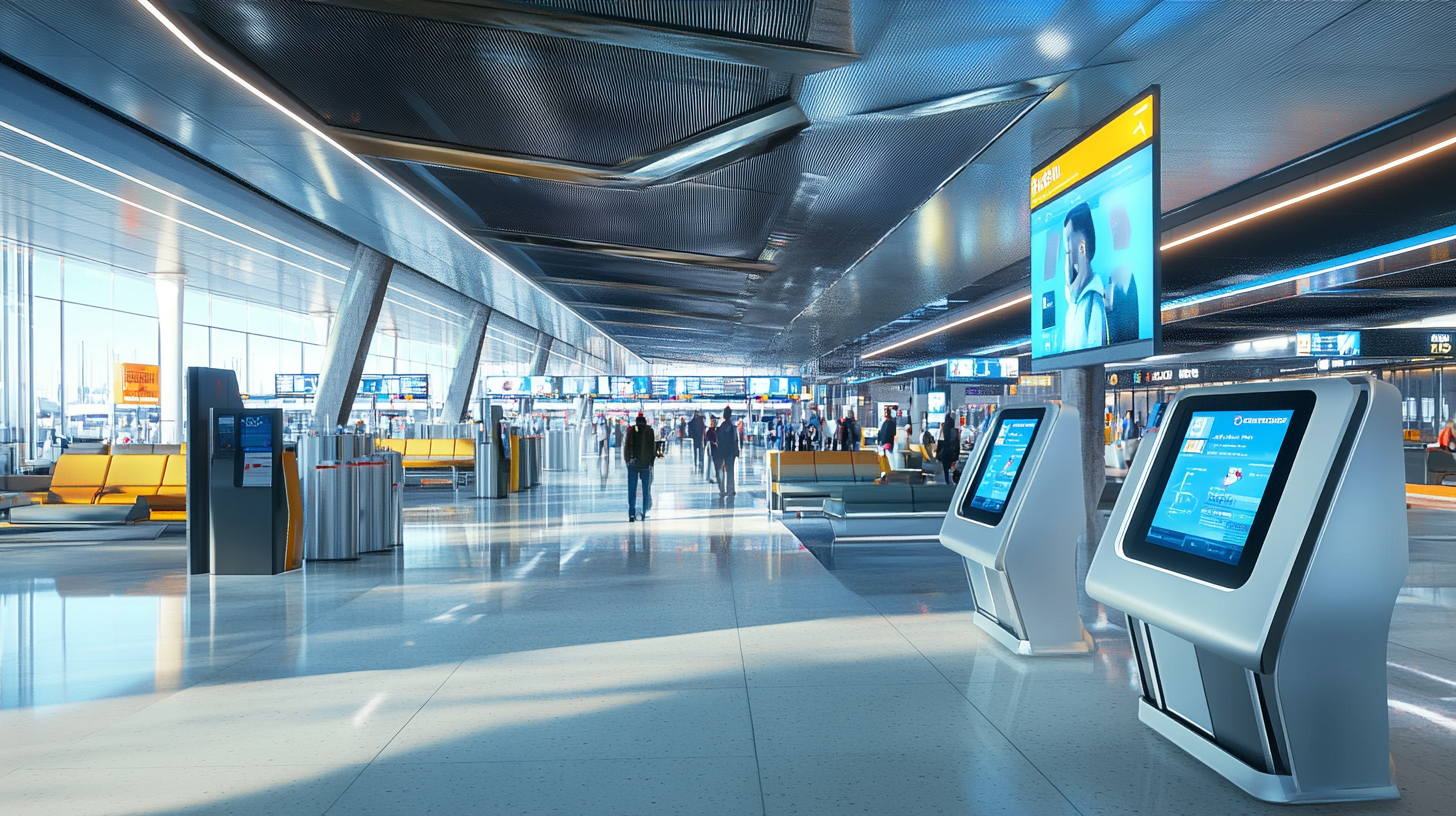
The use of AI in trip planning is increasing, offering travelers tailored itineraries that match their preferences and needs. Services like Skyscanner’s robust search capabilities enable users to find niche travel experiences, accommodating trends such as “Horti-Culture,” “Art-Venture,” and “Gami-Vacation.” This level of customization enhances satisfaction and streamlines the planning process. The influence of AI on travel personalization is explored in How AI is Revolutionizing Travel Planning , highlighting the benefits for both travelers and the industry.
Contactless Technologies and Virtual Assistance
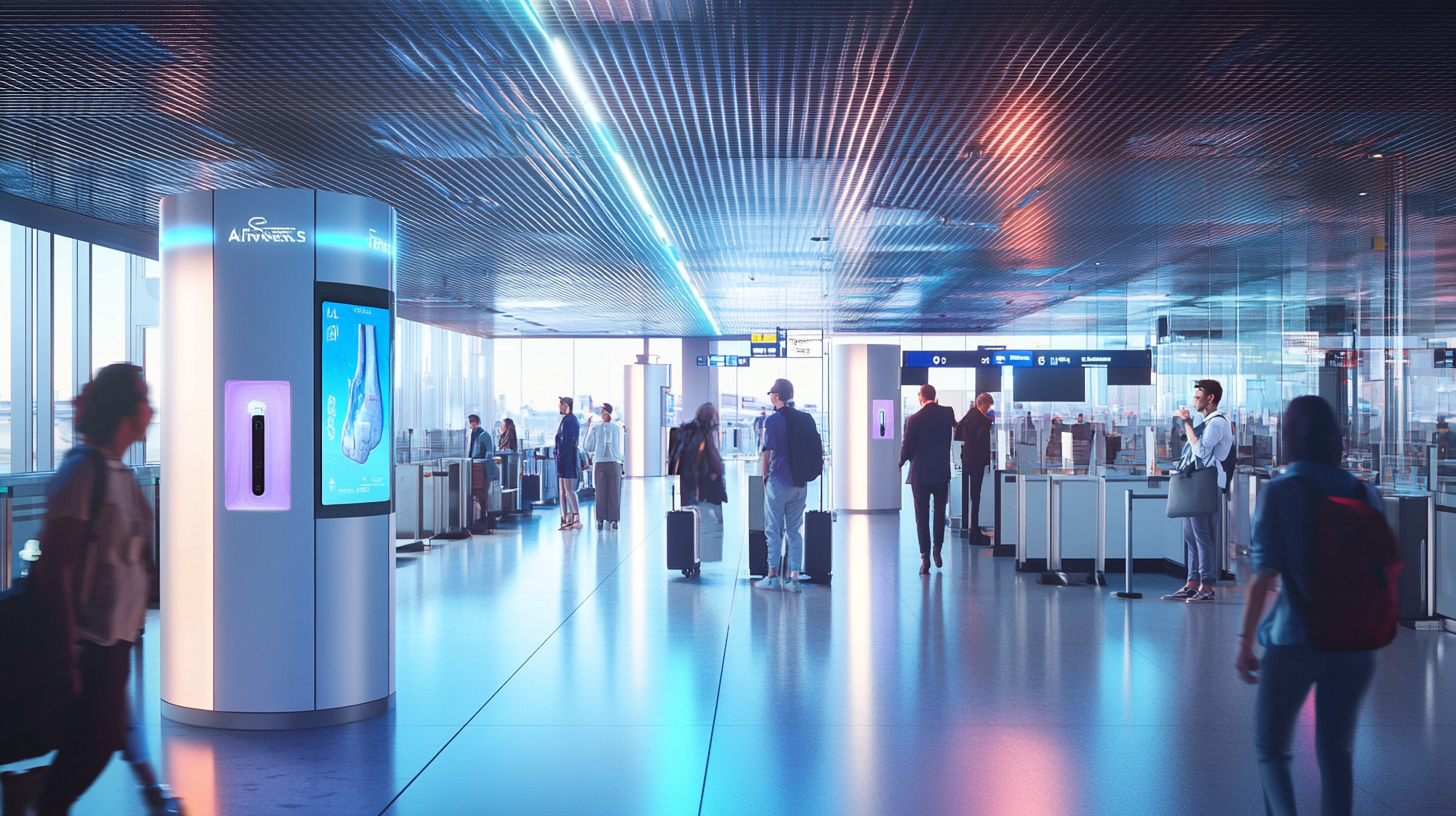
Contactless technologies are enhancing convenience, with features like mobile boarding passes, digital wallets, and virtual customer service agents improving efficiency and reducing physical contact—a priority in post-pandemic travel. Virtual assistants and chatbots are providing real-time support to passengers, answering queries, providing updates, and assisting with itinerary changes. These technologies are accessible via personal devices, ensuring that travelers have support at their fingertips. Further insights into these advancements can be found in The Role of Contactless Tech in Modern Air Travel , demonstrating their impact on passenger experience.
The Rise of Bleisure and Extended Travel Trends
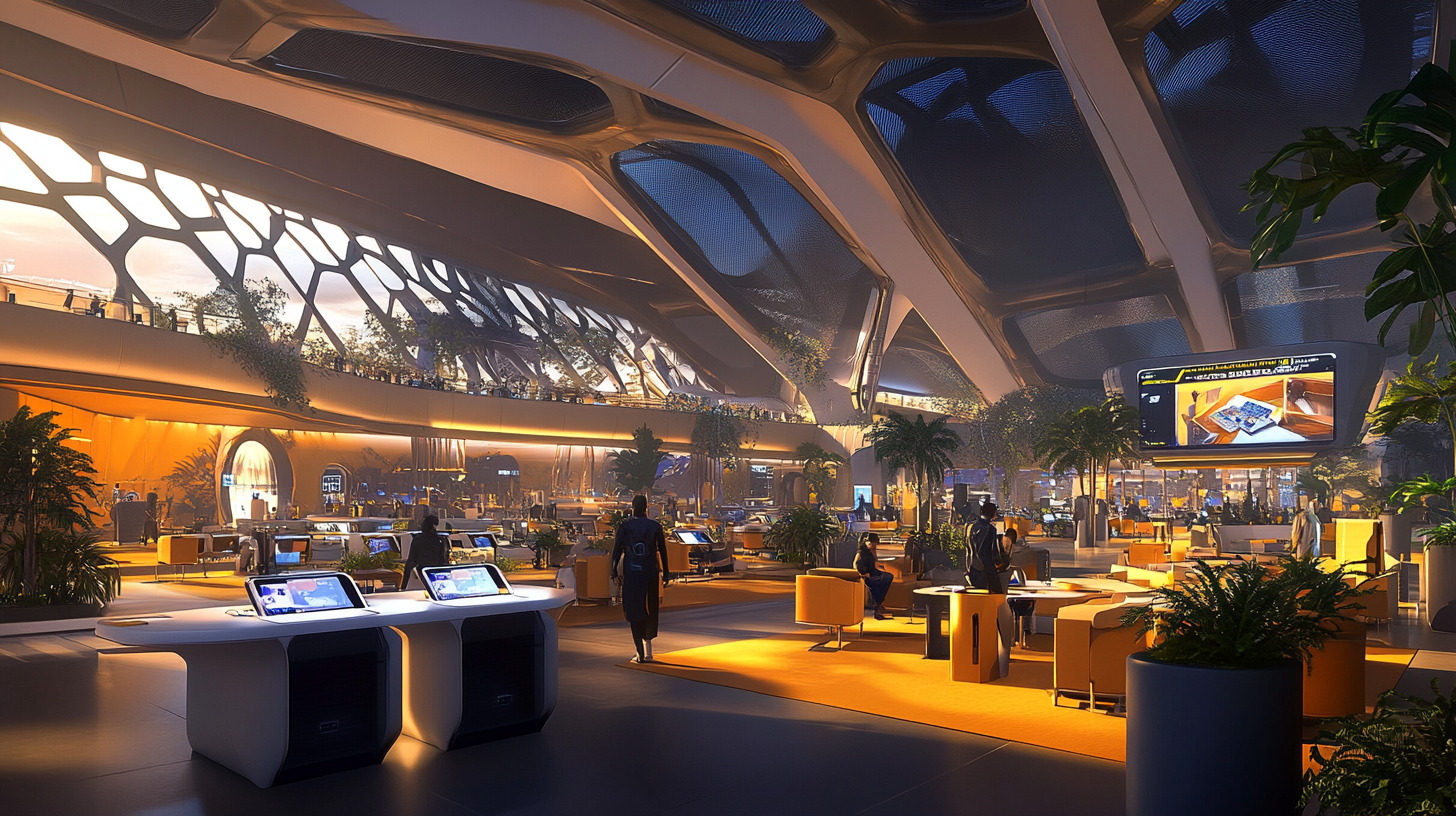
The blending of business and leisure travel, known as “bleisure,” is influencing travel patterns and airport services.
Accommodating Hybrid Work Models

With the rise of remote and hybrid work models, travelers are extending trips to combine work and leisure. Airports and airlines are adapting by providing amenities conducive to productivity, such as high-speed internet access, comfortable workspaces, and business facilities. Co-working spaces within airports and hotels are enabling travelers to conduct business efficiently while on the move. Airlines are also enhancing in-flight connectivity and offering quiet zones for work, recognizing the needs of the modern professional. For more on how the travel industry is adapting, see Bleisure Travel: The New Norm in a Hybrid Work Era .
Longer Stays and “Micro-Cations”
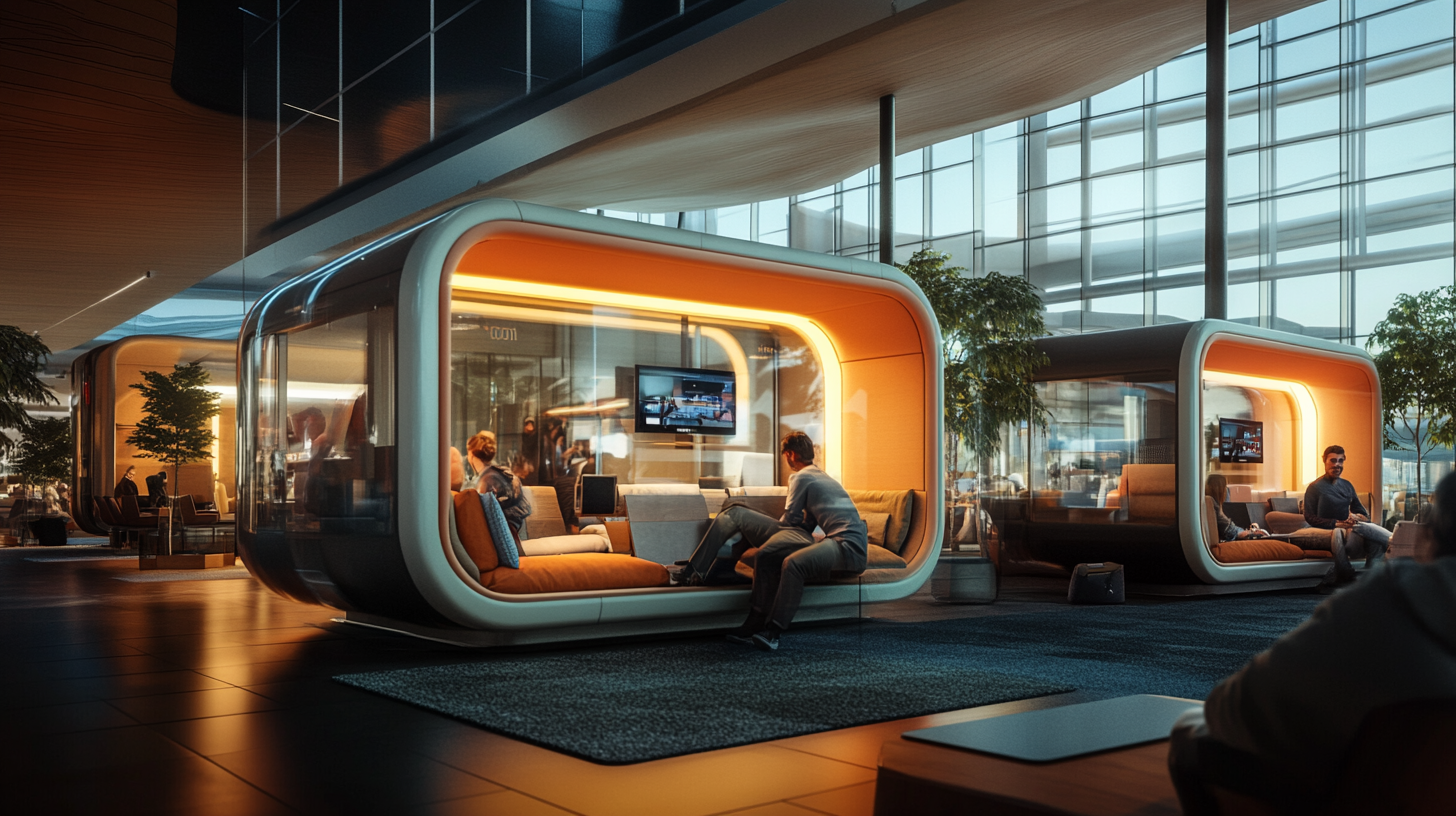
There is a growing demand for longer trips, with the average duration reaching 13.5 days, especially among luxury and bleisure travelers. Conversely, “micro-cations,” or short getaways, are also popular, offering quick escapes without significant time commitments. Travelers are seeking flexibility, with some opting for extended stays to fully immerse themselves in a destination, while others prefer short, frequent trips to recharge without disrupting their schedules. This shift is influencing the hospitality sector to offer more flexible booking options and tailored experiences. The trends shaping travel durations are discussed in Travel Patterns in the Post-Pandemic World , providing insights into changing traveler behaviors.
Challenges and Future Outlook
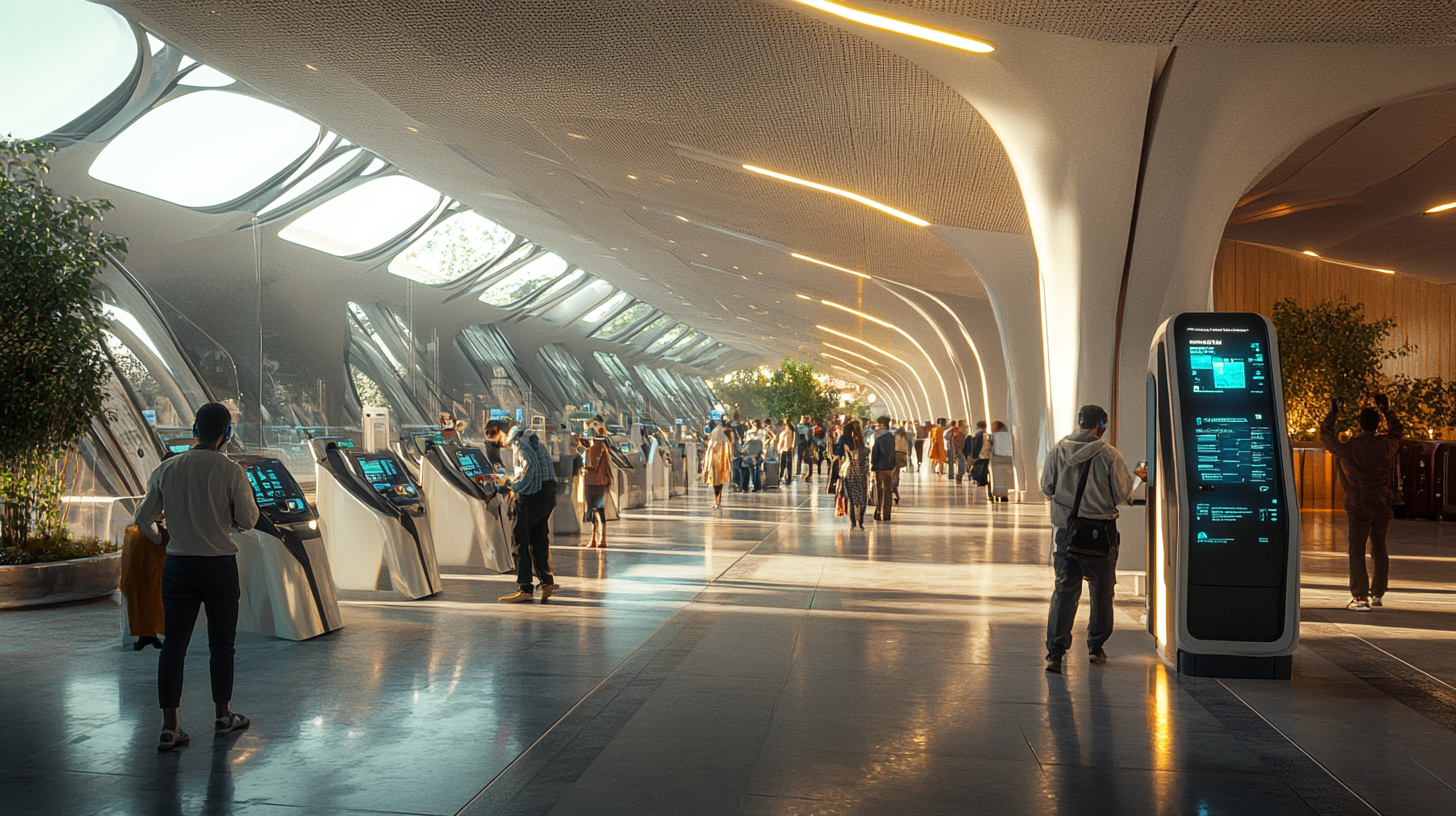
While the future looks promising, the travel industry faces challenges that require continuous innovation.
Supply Chain and Economic Pressures
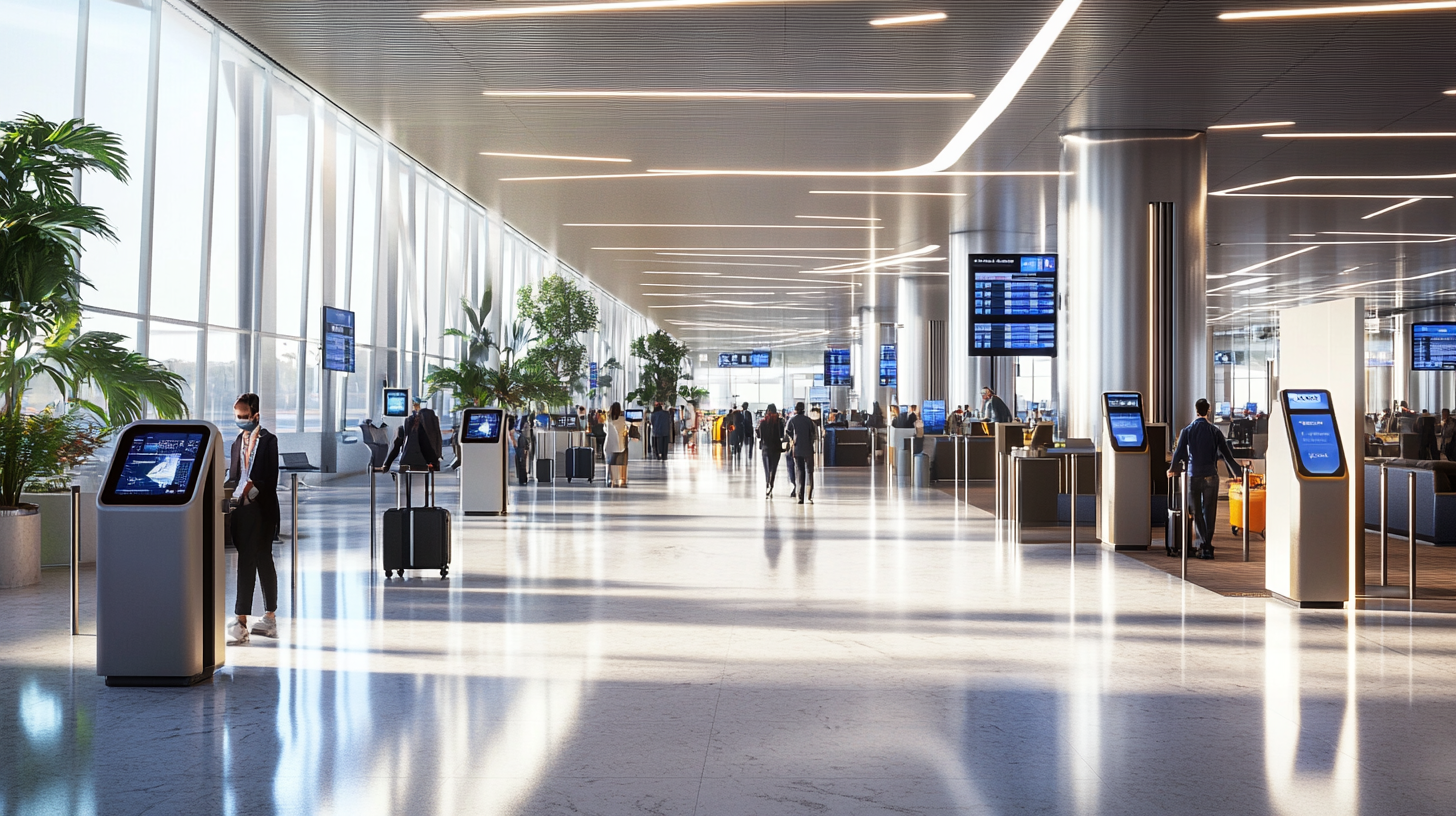
Persistent supply chain challenges from 2024 continue to impact airline revenues and operations. Economic pressures influence traveler spending habits, with many prioritizing travel experiences over daily luxuries, yet being mindful of costs. Airlines are seeking ways to mitigate these challenges by optimizing operations, forming strategic partnerships, and investing in technology to improve efficiency and reduce costs. The impact of these challenges is analyzed in Economic Factors Affecting the Airline Industry in 2025 , offering perspectives on potential solutions.
Climate Change and Overtourism
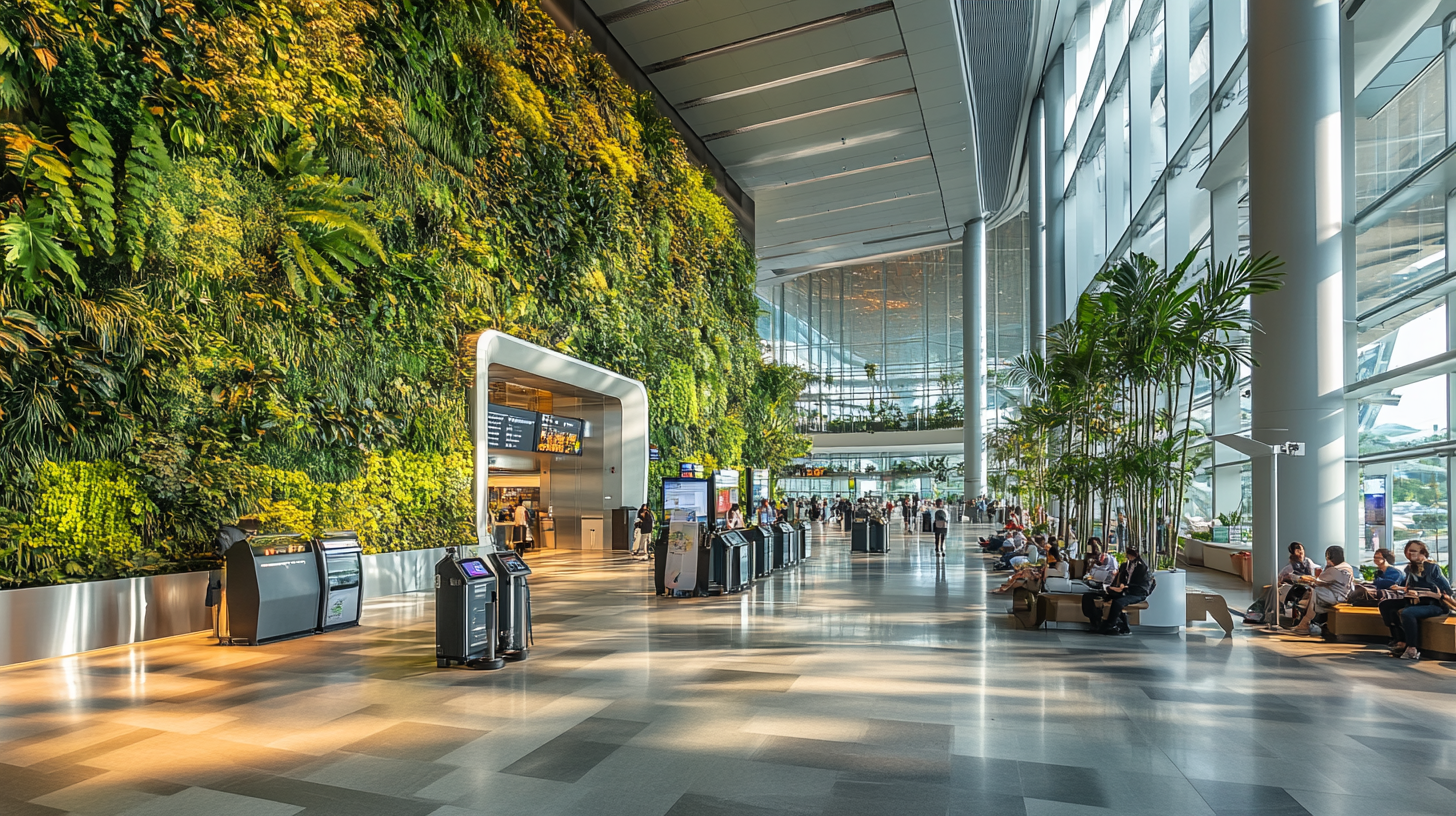
Environmental concerns are shaping traveler choices, with increased interest in sustainable travel options such as train journeys and eco-friendly accommodations. Overtourism leads to increased tourist taxes and stricter regulations, prompting travelers to explore less crowded destinations. Destinations are implementing measures to manage visitor numbers and protect cultural and natural resources. Travelers are becoming more conscious of their environmental footprint, opting for carbon-offset programs and supporting sustainable tourism initiatives. These considerations are discussed in Eco-Friendly Travel Trends and the Fight Against Overtourism , emphasizing the role of sustainability in future travel.
Final Thoughts
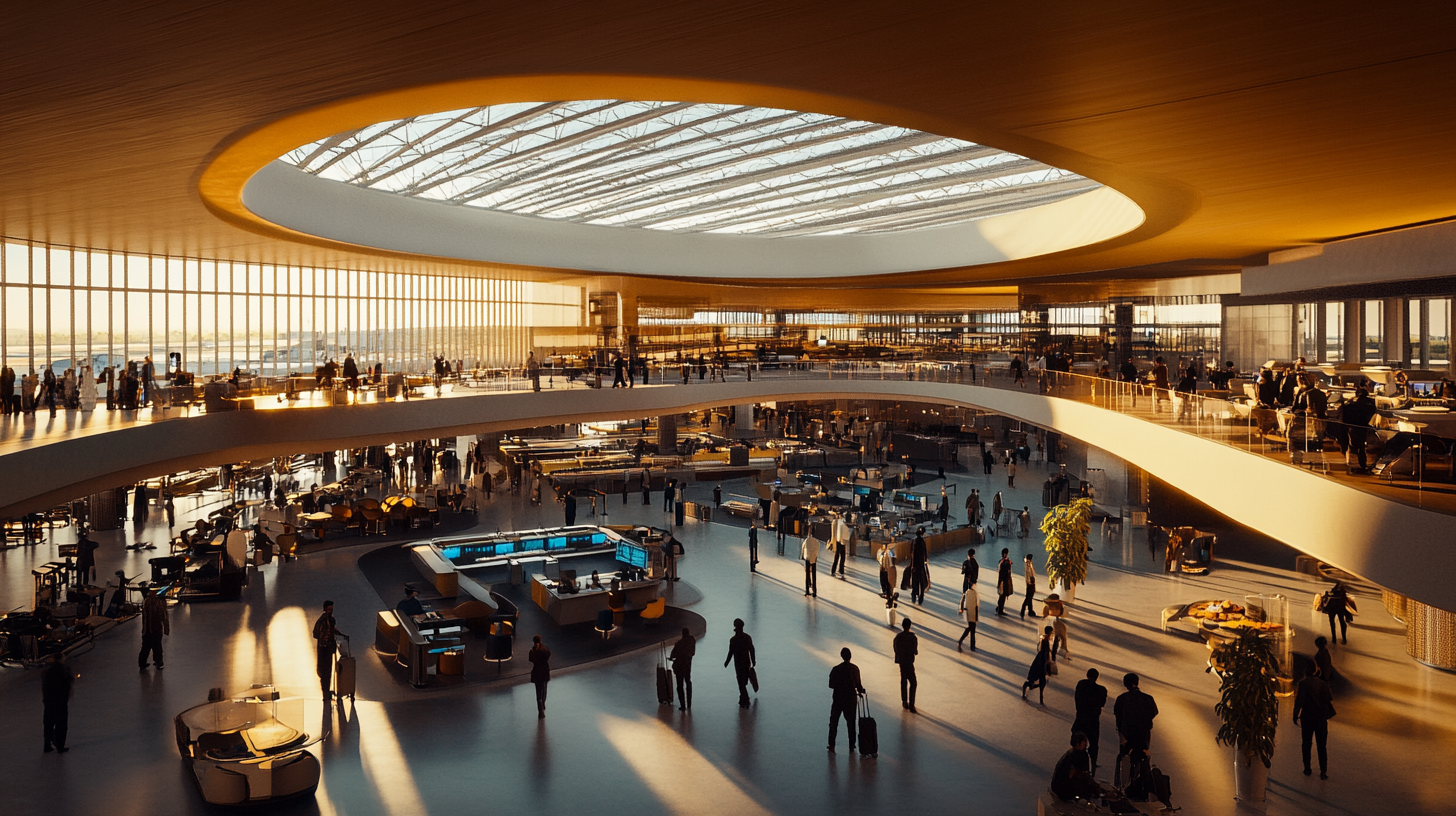
As we look to the future of air travel, the landscape is set to be more innovative, personalized, and environmentally conscious. Airports are evolving into dynamic spaces that offer more than just transit—providing comfort, entertainment, and connectivity that align with the evolving needs of travelers. From technological advancements like biometric check-ins and AI personalization to enriched lounge experiences and sustainable practices, the future of airport culture is poised to make air travel more seamless and enjoyable than ever before.
Follow us back to Seat 5A for more insights and updates on the evolving world of air travel. As the industry continues to evolve, collaboration between airlines, airports, technology providers, and policymakers will be crucial in addressing challenges and capitalizing on opportunities. Travelers can anticipate a future where every journey is tailored, efficient, and environmentally conscious, heralding a new era of air travel that is both exciting and responsible.



